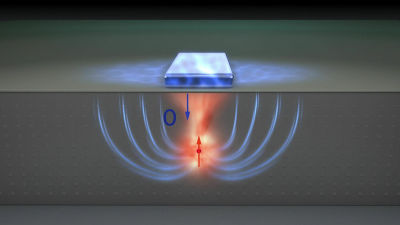Scientists succeed in developing a 32-bit RISC-V processor that works despite being ultra-thin at the atomic level
A research team from
A RISC-V 32-bit microprocessor based on two-dimensional semiconductors | Nature
https://www.nature.com/articles/s41586-025-08759-9
Fudan team develops new kind of chips - Chinadaily.com.cn
https://www.chinadaily.com.cn/a/202504/03/WS67ede3cca3104d9fd381d6ae.html
A 32-bit processor made with an atomically thin semiconductor - Ars Technica
https://arstechnica.com/science/2025/04/researchers-build-a-risc-v-processor-using-a-2d-semiconductor/
For a long time, the semiconductor industry has had Moore 's Law, which states that 'semiconductor integration density doubles every 18 to 24 months, and even if chip performance doubles, further miniaturization will continue,' as an empirical rule and has served as the goal of manufacturers. However, in recent years, it has been pointed out that Moore's Law is approaching its limit.
In this context, a new semiconductor material that can replace silicon is attracting attention: ' two-dimensional materials .' Silicon is a three-dimensional crystal that has a structure in the 'depth' direction in addition to the length and width, so even if miniaturization technology is improved, it will eventually reach its limit and reach a stage where it cannot be made any smaller. In contrast, two-dimensional materials, which have chemical bonds repeated on a single plane, have a thickness of only one to a few atoms at most, so it is expected that they will be able to avoid the limitations of silicon.
The research team used molybdenum disulfide, a two-dimensional material, to manufacture the processor. The chemical bonds of molybdenum disulfide are as follows: sulfur (yellow spheres) and molybdenum (blue spheres) are arranged in a zigzag pattern, making the material slightly thicker than the constituent atoms but quite thin.
Thanks to the efforts of many researchers, they have already succeeded in fabricating transistors just a few atoms thick from two-dimensional materials. However, building a complete integrated circuit with atomic precision is difficult, and until now, the maximum number of transistors that could be integrated was limited to a few hundred.
After five years of research and development, the research team at Fudan University succeeded in producing a wafer-sized molybdenum disulfide sheet on a sapphire substrate and developing a RISC-V processor integrating 5,900 molybdenum disulfide transistors.
The demo device the team built uses graphene as a conductive material in part, and two different metals, aluminum and gold, for the wiring, allowing them to tune the threshold voltage of each transistor through the wiring material and the embedded material. The combination of wiring and materials was identified using machine learning.
To create a functional circuit, the team created all 25 logic gates and built a processor with 18 of those functional gates. In the end, the overall yield of the processor was reported to be over 99.9%.
The resulting molybdenum disulfide processor has 5,900 transistors and can execute the full 32-bit RISC-V instruction set, but because only one bit can operate at a time, it requires 32 clock cycles to perform an operation, and the clock frequency is limited to kHz.
The researchers claim that their molybdenum disulfide processor is one of the most sophisticated silicon-alternative hardware implementations yet to be implemented, but they don't expect it to replace existing silicon processors, and instead expect it could fill a niche need, such as an ultra-low-power processor for simple sensors.
Related Posts:






